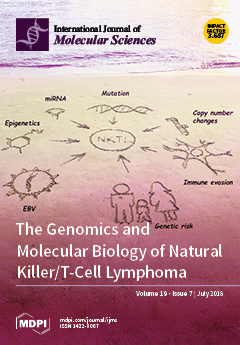The most active metabolite of vitamin D is 1α,25-dihydroxyvitamin D
3, which is a central regulator of mineral homeostasis: excessive administration leads to hypercalcemia. Additionally, 1α,25-dihydroxyvitamin D
3 is important to decision-making by cells, driving many cell types to growth arrest, differentiate
[...] Read more.
The most active metabolite of vitamin D is 1α,25-dihydroxyvitamin D
3, which is a central regulator of mineral homeostasis: excessive administration leads to hypercalcemia. Additionally, 1α,25-dihydroxyvitamin D
3 is important to decision-making by cells, driving many cell types to growth arrest, differentiate and undergo apoptosis. 1α,25-Dihydroxyvitamin D
3 regulates gene transcription by binding to a single known receptor, the vitamin D receptor. Rapid intracellular signals are also elicited in vitro by 1α,25-dihydroxyvitamin D
3 that are independent of transcription. There are many aspects of the multiple actions of 1α,25-dihydroxyvitamin D
3 that we do not fully understand. These include how a single receptor and provoked rapid events relate to the different actions of 1α,25-dihydroxyvitamin D
3, its calcemic action per se, and whether a large number of genes are activated directly, via the vitamin D receptor, or indirectly. A strategy to resolving these issues has been to generate synthetic analogues of 1α,25-dihydroxyvitamin D
3: Some of these separate the anti-proliferative and calcemic actions of the parent hormone. Crystallography is important to understanding how differences between 1α,25-dihydroxyvitamin D
3- and analogue-provoked structural changes to the vitamin D receptor may underlie their different activity profiles. Current crystallographic resolution has not revealed such information. Studies of our new analogues have revealed the importance of the A-ring adopting the chair β-conformation upon interaction with the vitamin D receptor to receptor-affinity and biological activity. Vitamin D analogues are useful probes to providing a better understanding of the physiology of vitamin D.
Full article






